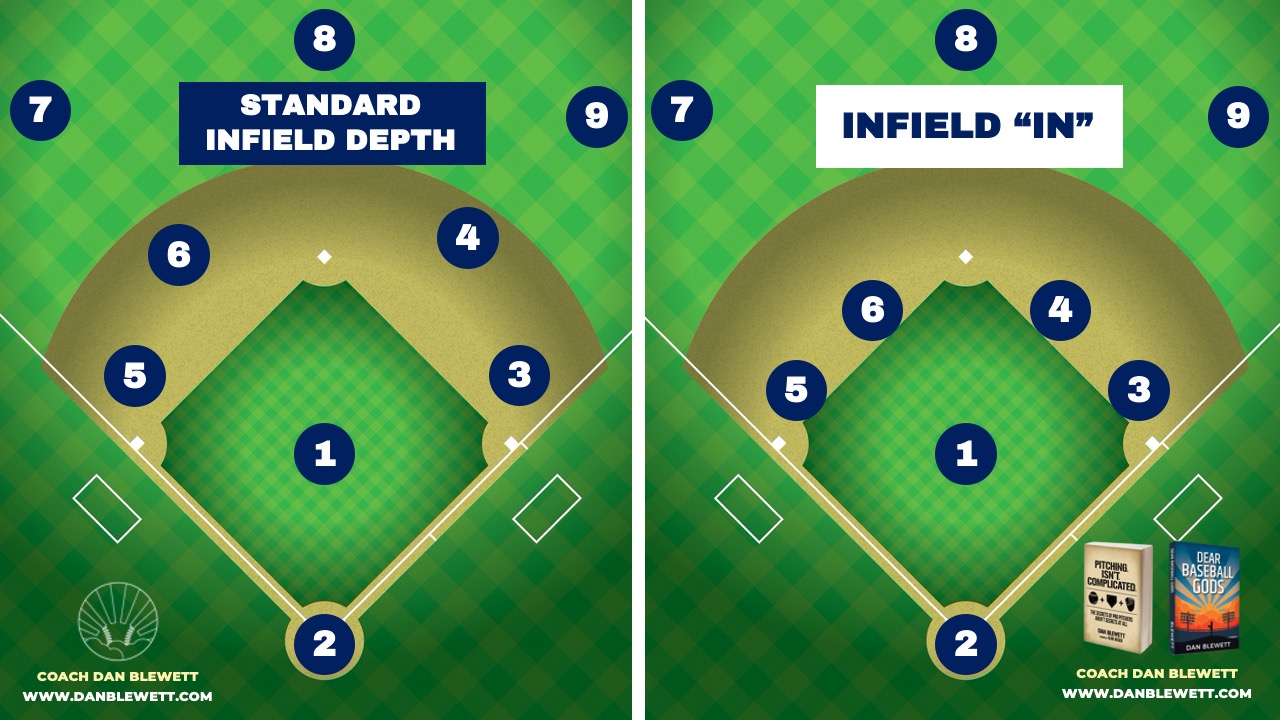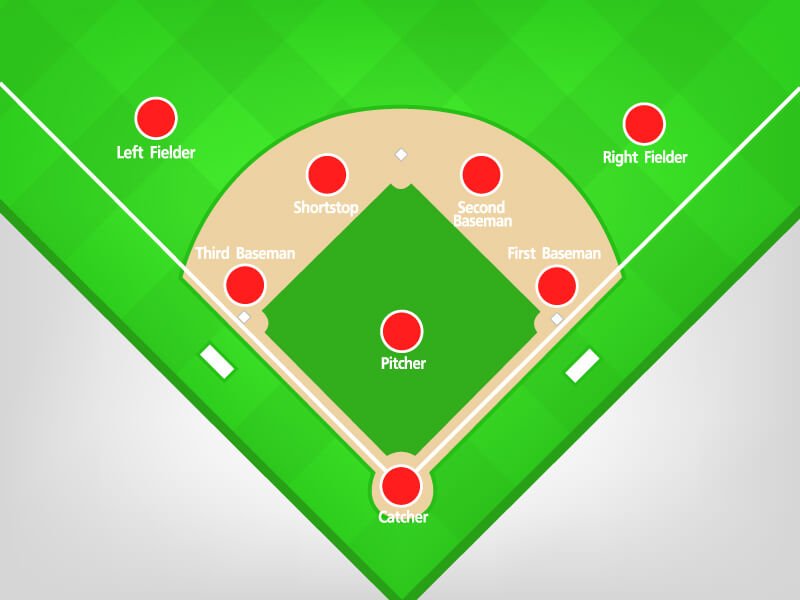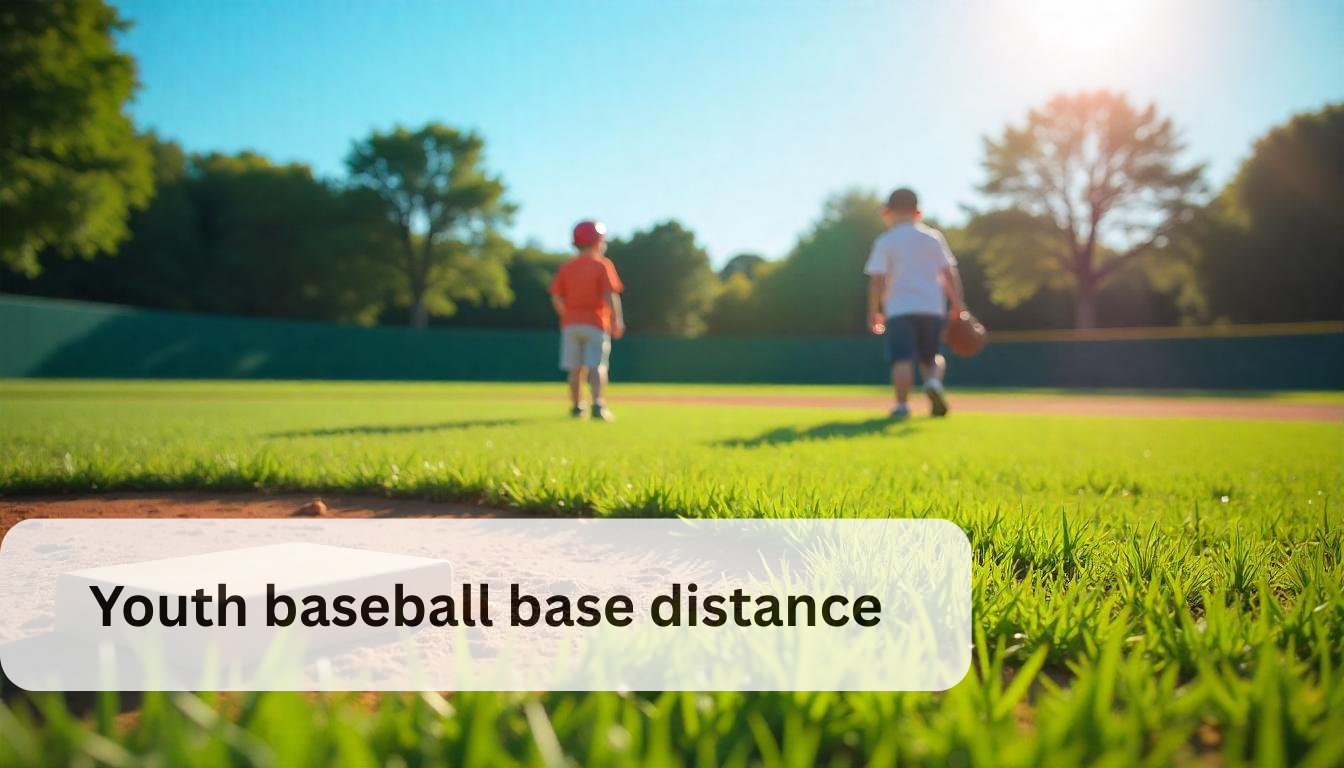Baseball is a game of strategy and skill. Each player on the field has a unique role.
The question of the most important position in baseball sparks much debate. Some may argue for the pitcher, others for the catcher or shortstop. Each position has its critical responsibilities, making the game thrilling and complex. Understanding these roles can enhance your appreciation of baseball.
In this blog post, we will explore the key positions in baseball. We will discuss why each is vital to the game’s success. By the end, you will have a clearer picture of what makes baseball so fascinating. Let’s dive in and uncover the essential roles that make this sport so exciting!
Introduction To Baseball Positions
Baseball is a beloved sport with a rich history and complex strategies. Each player on the field has a specific position and role. Understanding these positions is crucial for appreciating the game. This section provides an overview of the most important positions in baseball.
Roles And Responsibilities
Each baseball position comes with unique roles and responsibilities. The pitcher stands on the mound and throws the ball to the catcher. The catcher squats behind the batter and catches pitches. Infielders, including the first baseman, second baseman, shortstop, and third baseman, field ground balls and make plays to get runners out. Outfielders, including the left fielder, center fielder, and right fielder, catch fly balls and prevent hits from turning into extra bases. Each position requires specific skills and plays a vital role in the team’s defense.
Historical Evolution
Baseball positions have evolved over time. In the early days of baseball, positions were less defined. Players often moved around the field based on the situation. As the game developed, positions became more specialized. The pitcher and catcher roles became more prominent. Infield and outfield positions were established to cover more ground. This evolution has led to the highly structured and strategic game we see today. Understanding this history helps appreciate the complexity and beauty of baseball.
The Pitcher: The Heart Of The Game
Baseball is a game filled with many important roles. Among these, the pitcher stands out as the heart of the game. The pitcher has a unique position on the field. Their actions can make or break the game. This makes the pitcher crucial in baseball.
Key Responsibilities
The pitcher has several key responsibilities during a game. First, they must throw the ball to the batter. This seems simple, but it is not. The pitcher needs to use different pitches. Fastballs, curveballs, and sliders. Each pitch type has its own technique. The pitcher must master them all.
Another responsibility is to keep runners from advancing. The pitcher must focus on the batter and the runners. Quick thinking and sharp reflexes are essential.
Impact On The Game
The pitcher’s performance greatly impacts the game. A good pitcher can control the game’s pace. They can make it hard for the opposing team to score runs. This can boost their own team’s confidence.
On the other hand, a struggling pitcher can lead to trouble. They might give up too many hits or walks. This can change the game’s outcome. The team’s defense relies on the pitcher. Their success is tied to the pitcher’s effectiveness.
The Catcher: The Game Strategist
The catcher is often considered the heart of a baseball team. This pivotal position requires a unique blend of physical and mental skills. The catcher not only defends but also devises game strategies. Their role is crucial for the team’s success.
Defensive Skills
A catcher’s defensive skills are vital. They must block wild pitches and stop runners. Quick reflexes and agility are essential. They need to catch fastballs and breaking balls consistently. Strong arms help in throwing out base stealers. Anticipating plays and positioning themselves correctly also matter. Their defensive abilities can change the game’s outcome.
Communication With Pitcher
Effective communication between the catcher and pitcher is key. They must share signals discreetly to avoid tipping off the opponent. This partnership builds trust and confidence. The catcher often guides the pitcher on pitch selection and location. Their understanding of the pitcher’s strengths and weaknesses can influence the game’s strategy. Good communication ensures a cohesive and effective defense.

Credit: www.reddit.com
Infielders: The Defensive Backbone
Infielders play a crucial role in baseball. They are the defensive backbone of the team. Their main job is to prevent hits, field ground balls, and make key outs. The infield positions include first base, second base, shortstop, and third base. Each position demands specific skills and quick thinking. Let’s dive into the roles and importance of each infielder.
Roles Of Each Infielder
The first baseman stands near the first base. They catch throws from other infielders to get runners out. They also field ground balls hit near their position. A good first baseman has a strong glove and quick reflexes.
The second baseman covers the area between first and second base. They often turn double plays with the shortstop. Quick hands and fast footwork are essential for this role. They also need a strong arm to make long throws to first base.
The shortstop stands between second and third base. This position is vital for defense. They field ground balls, catch line drives, and cover second base. The shortstop often has the most ground to cover. Speed, agility, and a strong arm are key traits.
The third baseman covers the area near third base. This position requires quick reflexes and a strong arm. They often field hard-hit balls and make long throws to first base. The third baseman also needs to be alert for bunts and slow rollers.
Importance In Defensive Plays
Infielders play a crucial role in defensive strategies. They must work together to prevent runs. Communication and teamwork are essential. Infielders often signal each other during plays.
Quick decision-making is vital. Infielders need to react fast to ground balls and line drives. They must decide where to throw the ball in an instant. This quick thinking can change the outcome of a game.
Fielding errors can lead to runs for the opposing team. Infielders must stay focused and minimize mistakes. A solid infield defense boosts the team’s confidence. It also puts pressure on the opposing team.
Outfielders: The Last Line Of Defense
Outfielders play a crucial role in baseball. They serve as the last line of defense. Positioned in left, center, and right fields, they must cover large areas. Their job is to catch fly balls, field ground balls, and prevent extra-base hits. Every outfielder needs speed, agility, and a strong arm. They often make the difference in close games.
Coverage And Range
Outfielders must cover vast spaces. Their range determines how well they defend. Speed and quick reaction times are essential. Good positioning helps them anticipate the ball’s path. A center fielder often covers the most ground. Left and right fielders support by covering gaps. Outfielders with great range make difficult catches look easy.
Role In Preventing Runs
Outfielders prevent runs by catching fly balls and fielding grounders. They stop base hits from turning into doubles or triples. Strong, accurate throws can stop runners from advancing. Outfielders need to communicate well with each other. They also work closely with infielders. This teamwork is vital for preventing runs.

Credit: danblewett.com
Shortstop: The Key Playmaker
The shortstop position in baseball is one of the most crucial roles on the field. This player is often considered the key playmaker due to their strategic position between second and third base. The shortstop handles a high volume of plays, requiring exceptional skill and quick decision-making. Their performance can greatly influence the outcome of the game.
Defensive Range
A shortstop’s defensive range is vital for a team’s defense. They cover a large area on the field, making it difficult for hitters to get the ball through the infield. Quick reflexes and agility are essential traits. The shortstop often dives for ground balls and makes difficult throws, showcasing their defensive prowess.
Infield Leadership
The shortstop often acts as the leader of the infield. They communicate with other players and direct defensive shifts. This role requires confidence and the ability to make quick decisions. The shortstop also works closely with the second baseman during double plays, ensuring smooth and effective execution.
First Baseman: The Reliable Glove
The first baseman stands as a crucial player in baseball. Known for their reliable glove, they are the backbone of the infield. Their skills often save other players from errors. With swift reflexes and strong hands, they ensure the ball stays in play. Let’s dive into their key roles.
Handling Throws
The first baseman handles many throws during a game. They catch balls from infielders, outfielders, and even pitchers. Their main job is to catch every throw to get the batter out. A good first baseman has quick reflexes and excellent hand-eye coordination. They must be ready to catch high throws, low throws, and everything in between. This keeps the game moving smoothly and prevents runs.
Role In Double Plays
Double plays are a first baseman’s shining moment. They start or finish many double plays. In a typical double play, the first baseman catches the ball and steps on first base. Then, they quickly throw the ball to second base to get another out. This play requires speed, accuracy, and teamwork. It can turn the tide of the game in their team’s favor. The first baseman’s role is vital in these high-pressure moments.
Designated Hitter: The Offensive Powerhouse
The designated hitter (DH) plays a unique role in baseball. The DH does not play defense but focuses solely on batting. This player often brings significant offensive power to the team. Let’s explore why the DH is crucial to a team’s success.
Batting Impact
The DH’s primary responsibility is to hit the ball. They don’t have to worry about fielding. This focus allows them to excel at batting. A strong DH can boost the team’s run production. They often hit home runs and drive in runs. Their presence in the lineup can intimidate opposing pitchers.
Strategic Use In Lineup
Managers use the DH strategically in the lineup. They often place the DH in the middle of the batting order. This position maximizes their impact on the game. The DH can protect other key hitters. They can also create scoring opportunities for the team. By focusing solely on hitting, the DH helps balance the lineup. This specialization can give the team a competitive edge.
Conclusion: Determining The Most Important Position
Choosing the most important position in baseball can be challenging. Each role contributes significantly to the team’s success. Understanding the key positions helps appreciate the game better.
Determining the most important position in baseball is challenging. Every player has a crucial role. Each position brings unique skills and responsibilities. Some positions stand out due to their impact on the game.
Factors To Consider
Several factors help decide the most important position. First, think about the frequency of play. Pitchers throw the ball every play, making their role critical. Catchers are also vital as they handle every pitch. Another factor is defensive responsibility. Shortstops and center fielders cover a lot of ground. They make key plays that can change the game’s outcome. Offensive contribution is another factor. Positions like first base and outfield often have strong hitters. Their ability to score runs can determine a game. Leadership and strategy also play a part. The catcher often directs the game’s flow. They signal pitches and manage the defense.
Final Thoughts
Baseball positions all have their importance. Pitchers and catchers are essential for their constant involvement. Shortstops and center fielders are key for their defensive skills. Positions with strong hitters contribute significantly to the offense. Leadership roles, often filled by catchers, shape the game’s strategy. Each factor contributes to the team’s overall success. “`

Credit: www.reddit.com
Frequently Asked Questions
What Is The Most Important Position In Baseball?
The pitcher is often considered the most important position. They control the game by pitching and setting the pace.
Why Is The Pitcher Crucial In Baseball?
Pitchers are crucial because they initiate every play. Their skill and strategy can determine the game’s outcome.
How Does A Catcher’s Role Impact The Game?
Catchers are vital for guiding pitchers and preventing stolen bases. They also manage the defense and call pitches.
Why Is The Shortstop Important In Baseball?
Shortstops are key defensive players. They cover a lot of ground and are involved in many plays.
Conclusion
The pitcher’s role stands out as crucial in baseball. Their influence on the game is unmatched. Pitchers control the game’s pace and challenge batters. They require skill, strategy, and focus. Every pitch matters. Understanding this position deepens your appreciation for the sport.
Baseball fans should watch pitchers closely. Their performance shapes the game’s outcome. So, next time you enjoy a game, keep an eye on the pitcher. You might notice something new. Baseball is a game of skill and strategy. And pitchers are at its heart.





